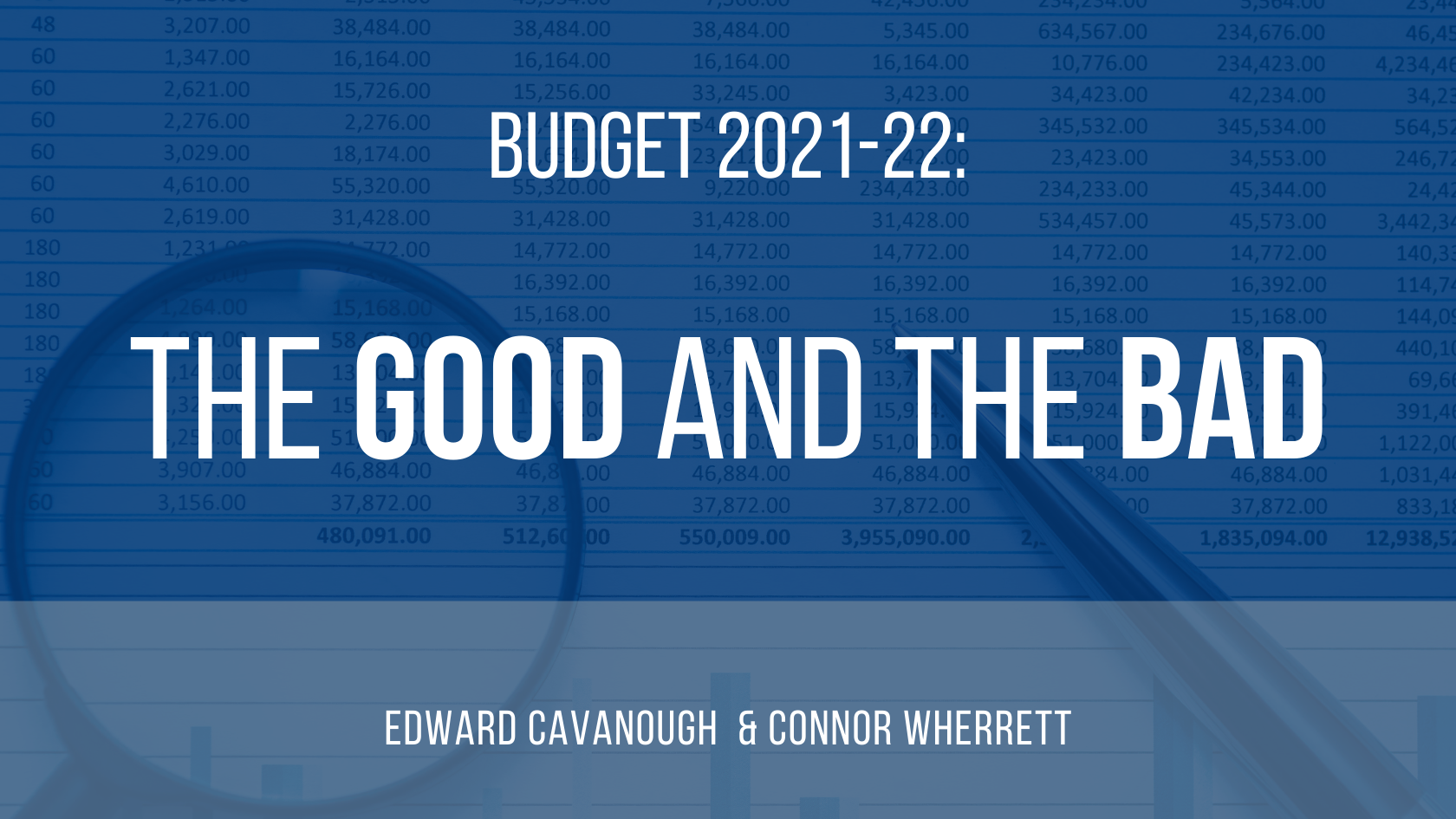Treasurer Josh Frydenberg handed down Budget 2021-22 this week, committing to a recession-era spending program nearing $100 billion, while announcing a $161 billion deficit for FY22, with gross debt climbing to $980 billion by 2025.
There were some positive announcements in the budget – including major commitments to early childhood education & care (ECEC) and aged care. While many believe these measures could go further, they are welcome steps forward.
As always there were concerns over certain decisions taken, and some of the problems that were kicked down the road. Here’s our take on what’s working, and what could be improved:
What we liked
Improvements to early childhood education and care
The Federal Government is recognising that reform of the childcare subsidy is an essential step in not only achieving social progress, but also improving labour force participation and economic development. This reflects The McKell Institute’s suite of work on ECEC reform. In its present form, the Child Care Subsidy is economically inefficient, unfair to working mothers and a waste of women’s talent – and it is time it was amended.
The Government’s plan invests $1.7b over five years by:
- Increasing the Child Care Subsidy (CCS) rate by 30 percentage points for the second child and subsequent children aged five years and under in care, up to a maximum CCS rate of 95 per cent for these children,
- Removing the subsidy annual cap of $10,560 per child
While this is a good start, the benefits are limited to a small group of families. To access the increased subsidy rate a family needs at least more than one child under six, with both of those accessing childcare.
Recent analysis has shown that a plan that lifts the subsidy for one child will be more beneficial for the majority of Australian families. Only 8 per cent of families will be better off under the plan announced with the Federal Budget.
By contrast, McKell research last year demonstrated the benefits of living the child care subsidy for all families, including those with a single child.
Increased aged care funding
The ‘centrepiece’ of the budget is a $17.7 billion investment in aged care, a response to the damning Royal Commission into Aged Care Quality and Safety.
It’s a good start but the response fails to address the low wages of workers in the industry, and the package is smaller than what the Royal Commission recommended. Unions have made the case to increase earnings to attract workers to the industry – an outcome this package isn’t guaranteed to deliver.
Recognising we need unemployment below 5 per cent
The budget papers forecast a return to an unemployment rate of 4.75 per cent by the end of the forward estimates. The Reserve Bank of Australia has continually noted the need to get the rate of unemployment down as a means of putting pressure on wages. While there perhaps could have been more proactive measures to lift wage growth, this ambition is welcomed.
Abolition of the $450/month income threshold for super
The $450/month income threshold for superannuation payments is an anachronism that governments have been unwilling to remove in the past. But getting rid of this unnecessary quirk of the super system will mean that every dollar an Australian earns will be subject to superannuation payments. This will benefit lower income workers and those juggling multiple jobs, many of whom are women. But while it is welcome, it is no panacea for closing the gender gap in superannuation, which could have been better addressed by applying the superannuation guarantee to Commonwealth Paid Parental Leave payments.
Return of women’s budget statement
For the first time since 2014, a Federal Budget included a women’s budget statement. This alone has no material benefit – it is the policies and commitments within it that count. However, its inclusion is an important return to normalcy. Australian federal budgets have included a women’s budget statement for decades, including the Howard Government.
Women’s safety funding boost
The budget included $1.1b for women’s safety initiatives. The package includes a new partnership agreement with the states for commitment to the next National Plan. It’s a welcome move to help end the scourge of domestic and family violence. Other options, such as expanding paid domestic violence leave, were not considered, leaving more to be done another day.
What we didn’t like
No ambition on wage growth
The budget baked in low wages growth through the forward estimates. It also included an assumption that real-wages will decline over the next 12 months.
The Government appears to have accepted a future of low wage growth, and incorporated it into their economic plan. McKell would have liked to see a detailed plan for how to get wages up, other than simply aiming to lower the rate of unemployment. A single-minded focus on the headline unemployment rate does little to address other drivers of low wages, such as widespread underemployment and precarious work.
The low wage growth expectations also come after years of overestimating how fast wages will grow. Perhaps this budget offers a more realistic prognosis – but it is a poor outcome for workers already impacted by a decade of near-stagnant wage growth.
Little support for the clean-energy transition
The budget only modestly committed funding to expedite the clean energy transition. It includes support for “low emissions” technology development, such as $263.7m for fossil fuel carbon capture projects and $275.5m for “clean hydrogen” export hubs. When other nations are committing billions towards clean energy, this is a drop in the ocean.
Oxford Green Recovery showed that Australia is underperforming in terms of green economic recovery spending. Australia’s spending ranks 18th of all developed countries, and 23rd globally.
Further, the Treasurer was unwilling to commit to a net-zero target in his speech, instead demurring on the target.
A lack of action on wage theft
As we have noted, the Budget included an additional $8m for the Registered Organisations Commission, which oversees trade unions, but didn’t make any such commitments for the Fair Work Ombudsman, which oversees workplaces. The FWO plays an important role in combating workplace exploitation and wage theft – but it doesn’t have enough resources to do the job. McKell has identified widespread wage theft throughout Australia, and highlighted its economic consequences. By failing to provide additional resources to combat the scourge, the Morrison Government has again signalled it is unwilling to seriously tackle the problem.
No additional funding on quarantine
Despite pleas for the Federal Government to take more responsibility for quarantine, it has only allocated funding to expand the Howard Springs facility in Northern Territory, which had been announced prior to the budget. It is likely that COVID-19 will be with us for years to come, and some form of quarantine will be needed as cases spike in certain parts of the world. A Federal Government commitment to investing in fit for purpose quarantine facilities would help prevent outbreaks in Australia while hastening our re-opening to the world.
Uncertainty over borders & vaccine rollouts.
The Government has again demurred on target dates for international border openings. It is, on the surface, reasonable to simply say borders cannot open until the health advice says it is safe – this is common sense. However, there isn’t even a plan regarding how we can ever safely re-open. We know that some countries – like those in the Pacific with zero COVID cases – are likely candidates for future travel bubbles. But the Morrison Government hasn’t given any detail into how the future of international travel will work, creating deep uncertainty.
There are also concerns that by perpetually delaying the target dates for recommencing foreign travel, there are few incentives for Australians to get vaccinated. The experience of countries with more advanced vaccine rollouts is that, as the inoculation program advances to less-vulnerable cohorts, the pace of vaccination slows. This could happen in Australia. There is no target for vaccine distribution, which suggest little government urgency, nor a target for recommencing international travel which could serve as a carrot for those otherwise not interested in being vaccinated. Omitting this detail was a disappointment – and will have real economic consequences for Australia.




SOCIAL SHARE